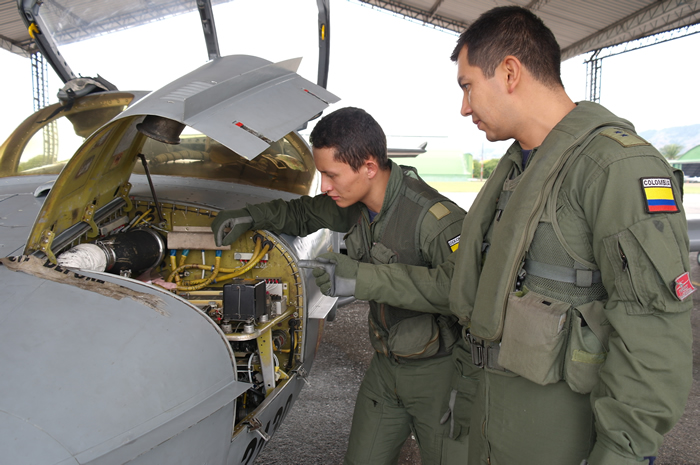“BIOMEPRO” software for the conditioning of superficial emg signals and obtention of relevant parameters
DOI:
https://doi.org/10.18667/cienciaypoderaereo.531Keywords:
Electromyography, Java, RMS Wrapping, Signal ProcessingAbstract
This article presents the development of BioMePro, a software tool for the processing of superficial electromyography (EMG) samples, implemented in JAVA, a multiplatform language, object oriented and interpreted code, language chosen in order to facilitate the portability of the Software in mention. BioMePro facilitates the work of extracting characteristics of superficial EMG signals, useful for inference systems such as neural networks or vector support machines, from a clear and easy to use interface with a varied set of options that allow to select the best processing that is required for a specific application. As a data acquisition system, the BiosignalPlux® equipment was used, the EMG test signals from the software that were captured through the implementation of a protocol for recording right forearm pronation movements in healthy young patients, a protocol chosen by its simplicity of implementation and reliability in the samples.
Downloads
References
Baturone, I., & Gersnoviez, A. (2010). Diseño de Sistemas Neuro-Difusos para Control de Robots mediante XFUZZY 3. Tecnología, aprendizaje y enseñana de la electrónica. Sevilla.
Blanco, R. (2016). Diseño de un sistema de predicción del rendimiento deportivo a partir de técnicas de inteligencia computacional en selecciones UMNG. Bogotá: Propuesta de Tesis, Maestría en Ingeniería Mecatrónica, Universidad Militar Nueva Granada.
D. K., S. G., S. K., S. G., & B. G. (2015). Design of Equiripple Linear-Phase FIR Filter Using Computer Aided Method. Communications and Signal Processing (ICCSP), (págs. 0001-0005). Melmaruvathur, India.
Dieter, G. E. (2009). Engineering Design. Boston: McGraw-Hill.
Figueroa-García, I., Aguilar-Leal, O., Hernández-Reynoso, A., Madrigal, J., Fuentes, R., Huegel, J., & García-Gonzalez, A. (2014). Platform for the Study of Virtual Task-Oriented Motion and its evaluation by EEG and EMG Biopotentials. IEEE Engineering in Medicine and Biology Society, 36th Annual International Conference. Chicago, USA.
https://doi.org/10.1109/EMBC.2014.6943805
Hargrove, L. J., Englehart, K., & Hudgins, B. (2007). A Comparison of Surface and Intramuscular Myoelectric Signal Classification. IEEE transactions on biomedical engineering, vol. 54, no. 5.
https://doi.org/10.1109/TBME.2006.889192
Kazerooni, H., & Strausser, K. A. (2011). The Development and Testing of a Human Machine Interface for a Mobile Medical Exoskeleton. 2011 IEEE/RSJ International Conference on Intelligent Robots and Systems. San Francisco, USA.
https://doi.org/10.1109/IROS.2011.6095025
Momen, K., Krishnan, S., & Chau, T. (2007). Real-Time Classification of Forearm Electromyographic Signals Corresponding to User-Selected Intentional Movements for Multifunction Prosthesis Control. IEEE Transactions on Neural Systems and Rehabilitation Engineering, 15(4), 535-542.
https://doi.org/10.1109/TNSRE.2007.908376
Princeton University. (16 de 11 de 2016). Introduction To Programming in Java. Obtenido de http://introcs.cs.princeton.edu/java/97data/
R. B., A. C., & M. P. (2016). Diseño de un sistema difuso para el reconocimiento de la actividad muscular. IJIAS, 19(2).
Romo, H. A., Realpe, J. C., & Jojoa, P. E. (2007). Análisis de Señales EMG Superficiales y su Aplicación en Control de Prótesis de Mano. 14(1).
Saikia, A., Mazumdar, S., Sahai, N., Paul, S., & Bhatia, D. (2016). Comparative Study and Feature Extraction of the Muscle Activity Patterns in Healthy Subjects. 3rd International Conference on Signal Processing and Integrated Networks. Noida, India.
https://doi.org/10.1109/SPIN.2016.7566678
Universidad Militar Nueva Granada. (2016). Manual de Usuario de Software BioMePro. Bogotá.

Downloads
Published
Issue
Section
License
Assignment of Copyrights
Authors assign Ciencia y Poder Aéreo journal the exclusive rights (reproduction, distribution, public communication, and transformation) to exploit and commercialize their work, in whole or in part, in all the formats and modalities of present or future exploitation, in all languages, throughout the life of the work and throughout the world.
All contents published in Ciencia y Poder Aéreo journal are licensed under a Creative Commons Attribution 4.0 International License, whose complete information is available at http://creativecommons.org/licenses/by/4.0/
Under the terms of this license, users are free to download, print, extract, archive, distribute and publicly communicate the content of articles, provided that proper credit is granted to authors and Ciencia y Poder Aéreo, scientific journal of the Graduate School of the Colombian Air Force. Except when otherwise indicated, this site and its contents are licensed under a Creative Commons Attribution 4.0 International License.
For other uses not considered under this license it is required to contact the Director or the Editor of the journal at the e-mail address cienciaypoderaereo1@gmail.com.
The Graduate School of the Colombian Air Force and this publication are not responsible for the concepts expressed in the articles, including the metadata or the affiliation stated by authors. This is the full responsibility of the authors.





















